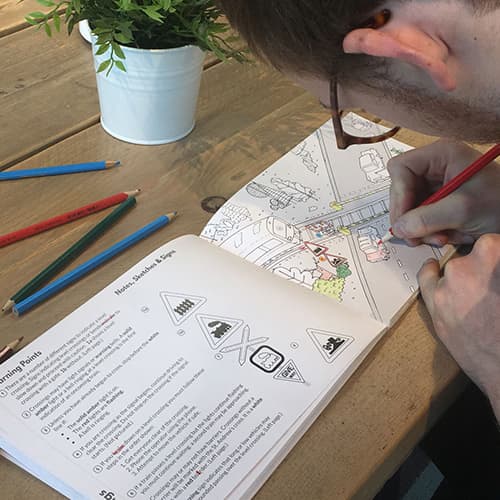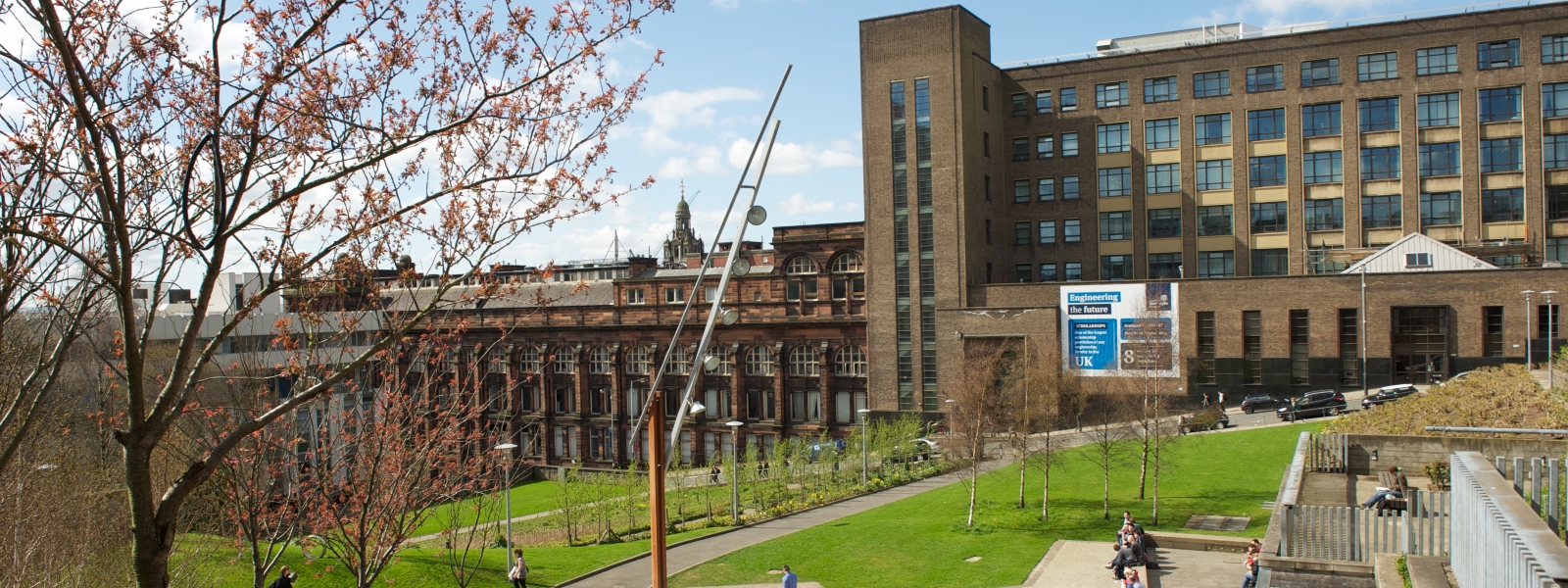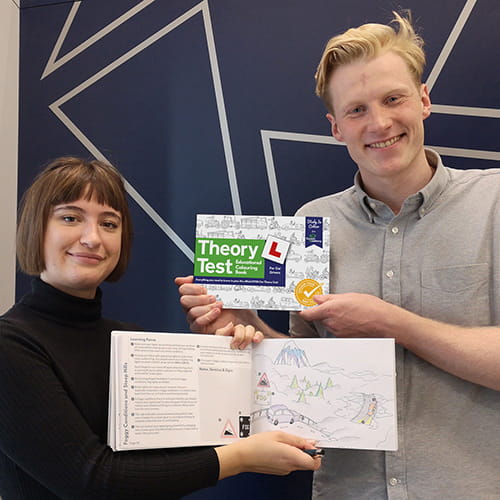Product Design Engineering graduate Matthew Carter is the founder and managing director at Colour Academy Publishing Ltd, which created the first educational colouring book for the UK Car Theory Test. Find out more below about Matthew's time at Strathclyde, highlights of his course and his ambitions for the future.
Why did you choose to study at Strathclyde?
Strathclyde has a great engineering reputation, and I knew I preferred the technical side of design to the arts side of design (I had never enjoyed writing art history essays – and was glad to hear I wouldn’t have to at Strathclyde). After knowing everyone at high school so well, I found starting at the University exciting because I got to go out and meet lots of new people.
Why did you choose to study Product Design Engineering?
I enjoyed graphic design and product design in high school, they were my favourite classes. I was also great at computing, but didn’t enjoy it as much as graphic and products. From the syllabus I saw that we would still get to do some programming on the course, whereas if I took computing it had less variety and I wouldn’t get to do any graphics or product.
I received a lot of encouragement about how versatile any degree in engineering would be which was great as I always like to keep my options open, so product design engineering it was!
What was it like to study in the Department of Design, Manufacturing & Engineering Management (DMEM)?
Studying in DMEM provided lots of opportunities to try new things out, as well as access to great prototyping facilities and a dedicated studio for final year students. The staff made each project interesting with competitions, real life problems and keeping marking schemes open to left field solutions.
The department helped in many ways to make me industry ready, including providing me with numerous opportunities to present, pitch and answer questions. I’ve always felt confident presenting – and all of the design critiques and presentations I gave throughout university have helped massively.
What were the highlights of your course?
For the first three years DMEM projects culminate in a competition, it added another element of excitement and drive to the work we did there. I enjoyed the competition days a lot.
In second year we were invited on a weekend trip to Barcelona, Spain to tour some manufacturing facilities. Getting to see a variety of manufacturing plants in operation helped us visualise and respect the manufacturing process more.
This trip was organised by industrial partner Jerome Finlayson, from the Scottish Manufactory Advisory Service.
Finally, the great project we completed for Peak Scientific as part of our final year studies. This was a group project in which we worked with an industrial partner to develop a non-mechanical failsafe solution for their high-tech lab equipment. The clients were very specific about what they wanted and we were able to deliver a design that ticked all of the boxes (and more!). Our team worked really well together and delivered all of the key components in record speed. I’m still very proud of the fact our Industrial Projects group won an award from the Royal Society of Engineers for teamwork in our final year.
Did you travel as part of your studies?
Yes – I spent a year on exchange in Los Angles, California at California Polytechnic Pomona (CPP).
Getting to spend a year on exchange was a life changing experience. CPP had a big focus on manufacturing and I got to try out many different classes I wouldn’t have access to anywhere in the UK.
I got to pour metal in the foundry and program CNC machines, which better informed my projects when I returned to the UK. I also got to surf and ski every weekend (in between studies, of course).
Tell us about your educational colouring book, how did the project begin, what was involved, what were the best parts of its journey?
Our Theory Test educational colouring book helps people learn to drive. I created it to combat the lack of engaging study materials available for the theory test. In short, studying the Highway Code can be really boring – and we make it easy and fun. Our book has five main benefits:
- diagrams & descriptions
- engaging colour
- notification-free environment
- better memory retention
- humour
The project started after a lightbulb moment as I was trudging home after failing my first attempt at the theory test. I was really downbeat, I was about to graduate with my degree but I’d failed a theory test. I sought a more effective learning method for myself as the apps and books I’d been using and struggling with weren’t working. I decided to create my own colouring book for everything I needed to learn and realised I could expand it to suit a wider audience.

My drawings were pretty basic though so I called my friend Katie, an illustrator and undergrad at Strathclyde and asked if she wanted to work on creating a book with me. If you are a visual learner practising for your theory test, you don’t learn well on mobiles or you just want to inject some fun into the learning process then our book is for you.
What are your ambitions for the future?
I’d like to grow my company, Colour Academy, to launch other titles beyond the driving Theory Test. The next book we’re considering will help foreign nationals sit the Life in the UK exam and gain their UK citizenship. In order to do this, I’m going to have to raise funds and hire skills and capacity into the business.
What advice would you give to someone considering coming to study at DMEM and the University of Strathclyde?
It sounds like a cliché but you’ll get out what you put in. You'll have so much great technology, experience and equipment available to you in the department but it’s up to you to get in there and experiment with it (just make sure you check with the technical support staff beforehand in case you suddenly need some help). The technical staff are the key to solving a lot of the practical mechanical, electronic and prototyping issues in your projects – they are definitely worth having on your side!

